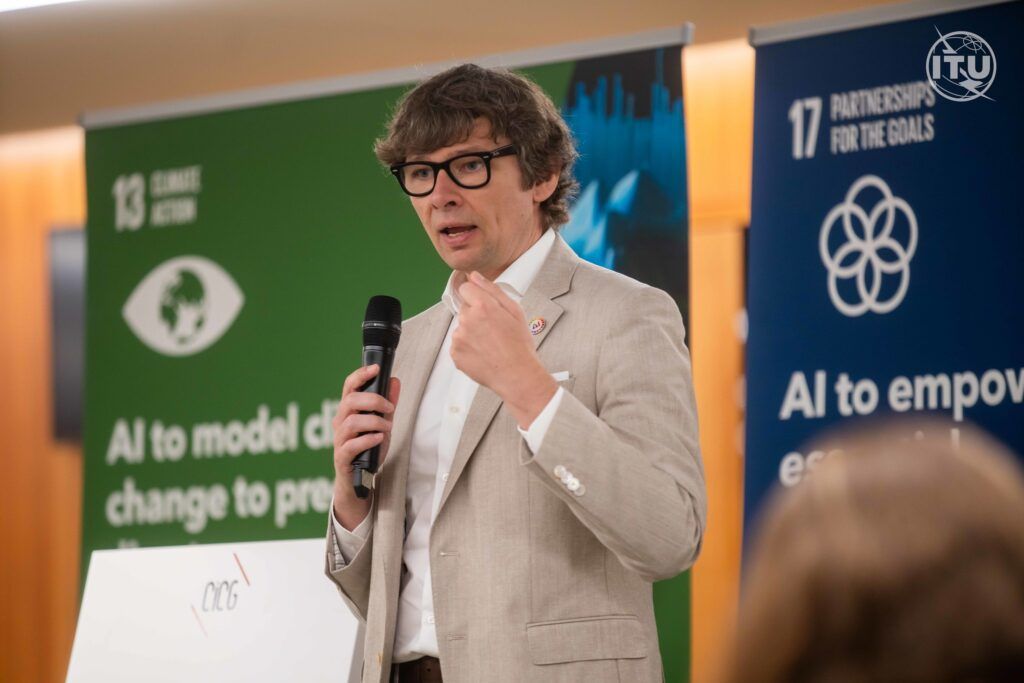
Let’s not let AI leave the world behind

By Tomas Lamanauskas, Deputy Secretary-General, ITU
In just one short year, artificial intelligence (AI) has taken centre stage in forecasts about the world’s future. It has prompted both excitement and fear.
As we all know, fear sells better. That’s why Leave the World Behind with Julia Roberts became a top movie on Netflix. It’s a gripping, scary look at global technological infrastructure collapse.
A movie on AI-driven precision agriculture would hardly capture so much attention. Yet reality is far more complex than movies.
AI, if harnessed properly, can be a powerful source for good in this world.
Generative AI has the potential to add up to USD 4.4 trillion in value to the global economy, surpassing the gross domestic product of most countries. It is estimated that AI can help mitigate up to 10 per cent of global greenhouse gas emissions by 2030. In fact, digital solutions like AI can accelerate progress on 70 per cent of all the targets under the United Nations Sustainable Development Goals (SDGs).
Moreover, the impact of AI is more than statistical. It’s about real impact that’s driven by real people.
For instance, Mouhamadou Kebe’s start-up in Senegal, Tolbi, uses satellite data to support smallholder farming across West Africa. He’s one of the latest winners in the AI for Good Innovation Factory – a UN-based pitching and acceleration platform for AI start-ups.
In some cases, cashew farmers adopting Tolbi’s guidance have more than tripled their yields.
Still, the risks of AI are real, too.
Why worry?
The risks range from misinformation and deepfakes – troubling in a year when more than half the world is heading to the polls – to socio-cultural bias. AI data processing consumes vast amounts of electrical power, as well as the water needed to cool expanding data centres and manufacture microchips.
These risks call for appropriate governance models.
A major risk, unfortunately, is also of rapid, transformative AI development leaving billions of people behind.
What does AI mean for the 2.6 billion people in today’s world who are still unconnected?
Is equitable access even possible when only a handful of front-runner countries possess nearly half of AI-related publications and patents?
And what does the future hold for any of us, given the recent estimates from the International Monetary Fund that AI will affect almost 40 per cent of jobs globally?
Just like in previous technology revolutions, we will not be able to stop the change.
So what matters is to be prepared for it – and this applies to people and countries alike.
How are we helping?
The UN system and ITU – as the UN agency for digital technologies – have a crucial role here.
Three areas of action are key:
- First, developing technical standards to make AI systems safer and more secure, while encouraging competition and innovation. This what is happening in ITU’s standards work in digital agriculture, disaster management, health, and other areas.
- Second, leveling the playing field for developing and least developed countries, including through capacity-building.
- And third, convening experts from governments, the private sector, academia and elsewhere to work together on AI for the good of all of humanity.
ITU’s AI for Good platform has brought more than 40 UN agencies together with AI innovators and visionaries, as well as potential AI users in numerous industries and sectors.
They will all come together again at the next AI for Good Global Summit, taking place in Geneva, Switzerland, and online on 30-31 May, with AI Governance Day on 29 May.
Looking ahead
UN Secretary-General António Guterres is working hard to advance international governance of AI through his High-level Advisory Body on AI and the proposed Global Digital Compact.
In the meantime, we need to keep leveraging existing work to harness AI for good. ITU’s report about UN activities on AI highlights nearly 300 projects, from forecasting food crises to mapping schools based on satellite imagery.
We also need to tap into existing UN models and frameworks that could apply to AI governance.
The UN’s Inter-Agency Working Group on AI, co-chaired by ITU and the United Nations Educational, Scientific and Cultural Organization (UNESCO), recently gave an overview of those to the UN Secretary-General’s AI Advisory Body.
We have come together to harness the digital revolution before.
Two World Summits on the Information Society – in Geneva 2003 and Tunis in 2005 – laid out the framework for inclusive digital cooperation as the Internet was sweeping the world. The current WSIS+20 review process is helping us learn from the process so far and set the stage for the future.
The Summit of the Future in September 2024 is yet another opportunity to shape the digital world we want. Let’s seize this moment to harness the power of technologies like AI, mitigate their risks, and ensure equitable benefits for all.
Based on remarks by Tomas Lamanauskas at the Coordination Segment of the United Nations Economic and Social Council (ECOSOC) on 1 February 2024.
